Book Reviews
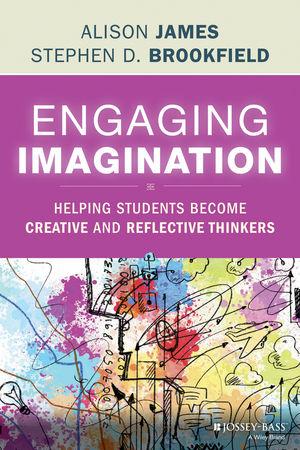
Engaging Imagination: Helping Students Become Creative and Reflective Thinkers poses a challenge to educators across fields to reach beyond traditional teaching and learning methods. Authors Alison James and Stephen D. Brookfield ask, “Why are we not open to varied expressive modes – video, art, drama, poetry, music – to gauge students’ learning? If there are multiple intelligences (Gardner, Frames of Mind: The Theory of Multiple Intelligences [New York, NY: Basic Books, 2011]), if students’ diverse histories, cultural backgrounds, racial identities, and personalities mean teaching and learning is inevitably complex (Allen, Sheve, and Nieter, Understanding Learning Styles: Making a Difference for Diverse Learners [Huntington Beach, CA: Shell Education 2010]) then shouldn’t our approaches to helping and assessing learning exhibit a similar variety” (4)? The book invites us to imagine “what if” (xii) students were given opportunities to explore their learning beyond lectures, discussions, reading, and writing. The authors do not intend to solve the institutional or assessment challenges of teaching more creatively, but to pose ideas for reflection and exploration. Each chapter provides websites to further engage concepts and activities described in the book. Part I, “Understanding the Role of Imagination in Learning,” argues in three chapters that students learn more effectively when they are given freedom to reflect. This is an engaged reflection, involving: creativity – where students are given ways to “unravel . . . question . . . ponder . . . clarify . . . demonstrate” (57); imagination – which focuses on possibilities; and play – learning engaged from new angles, leading to spontaneous insights. Part II, “Engaging Imagination Tools and Techniques,” forms the heart of the book and may prove to be a valuable resource to liven up syllabi and classrooms. In each of six chapters, a different way of teaching and learning is presented; two to eight activities are also described in detail, providing practical illustrations. Just one activity from each way of teaching and learning is included here. (1) Visual learning: Students create collages in response to a discussion question. (2) Story and metaphor: Students symbolize key learning experiences on a timeline. (3) Kinesthetic learning: Students use Legos or other concrete objects to construct models of their thinking-in-process. (4) Attending to physical space: A special space in the classroom (or an inflatable “pod”) can serve as a place where students, alone or in small groups, can video their live reflections. (5) Asking non-leading questions: Students are guided to think more deeply about their own beliefs by questions that ask for analogies, opposites, or ways of recognizing certain qualities. (6) Community impact on learning: Students map the various communities in their spheres of life to observe how each shapes their perspectives. Part III, “Negotiating the Realities of Engaging Imagination,” provides activities for students to navigate energy levels and emotions while learning. In a final chapter authors share how their own imaginations were engaged through the writing process. Engaging Imagination is not aimed so much at educators helping students to think creatively and reflectively about course content, but rather at presenting ways educators may help students to reflect on themselves as learners. Thus the subtitle can be misleading. However, most of the learning activities could be adapted for deepening student understanding of course content. The emphasis on student self-awareness contributes to the current pedagogical shift from teaching to impart information towards facilitating and empowering student-directed learning in a variety of classroom and online settings. Little is offered by way of guiding students towards a directed end; indeed doing so would negate the purpose of many of the activities. It is therefore significant that authors acknowledge their work as a complement to, rather than replacement of, traditional forms of teaching and learning. We are left with the same challenge students will have as a result of “engaging imagination”: to appropriate the insights gained.
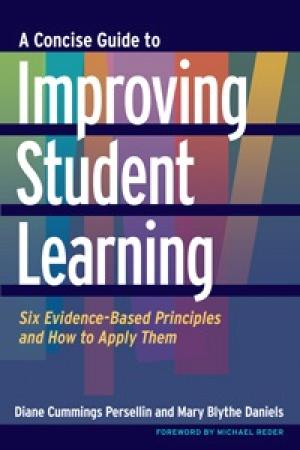
The authors of this brief resource provide educators with six of the most important principles to emerge from recent research on human learning. Taken together, these principles provide the elements of a framework for effective constructivist pedagogy, particularly in higher education: Desirable difficulties increase long-term retention (5-7) Meaningful and spaced repetition increases retention (12-13) Emotion and relevance deepen learning (15-16) Multisensory instruction deepens learning (25-26) Small groups engage students (32-33) Formative assessment or low-stakes evaluation strengthens retention (43-46) The authors offer a series of concrete “instructional applications” as well as an annotated summary of a few of the most salient research studies relevant to each principle. Interleaved with their treatment of the principles, concrete applications, and annotated bibliographies, the authors provide outlines of workshop sessions that address specific instructional techniques funded by the various principles under discussion. The main body of this highly practical book ends at page 60. Three appendices (on course design, lectures, and class discussions) bring the book to page 78. The final quarter of the book is taken up with extensive bibliographic references. The book has several strengths. It harvests a burgeoning body of literature on human learning in a highly accessible manner. It backs up its claims with relevant research. Specific instructional techniques and ideas that have solid grounding in empirical research on learning are also offered. Ample bibliographical references appear at every turn. Useful guidelines for improving student learning positively emerge from the book. The weaknesses of the book arise from its strengths. The authors’ treatment of the six principles, while insightful, come across as thin. Explicating and unpacking each principle in five or six pages as opposed to the one or two pages given to the task in the book would have aided the process of internalizing the concepts involved. The practical applications in each section have a great deal of merit, but the added interspersed workshop materials make the book somewhat difficult to follow. I would have preferred a less cluttered organizational structure. While I appreciate the authors’ intentions to offer a clear, pithy, and brief resource for faculty who want to make the shift toward more learning-centered pedagogy, the book as a whole comes across as a series of edited outlines for in-service presentations at faculty meetings. A lot less bibliographical material and a lot more explanation of key concepts would likely help the newcomer to discover the way of thinking about learning and teaching advocated in the book. This book might serve as a useful resource for faculty members who want to move away from the traditional orientation of the “sage on the stage” who suffers from “content tyranny” and toward a more engaged pedagogy, but only for those motivated by the books’ remarkable brevity. It would work well as a brief introduction for doctoral students who have to take a required course on teaching in higher education. It also could work well for faculty who already know this material and who want to have a quick summary at their fingertips when designing syllabi or who have the opportunity to teach other teachers how to teach effectively. In order to go beyond preaching to the already initiated, it would probably need further development and revision.

In this short synopsis, Using Technology to Gather, Store, and Report Evidence of Learning from NIACE’s Digital Learning Guides series, Terry Loane presents an overview of the current prevailing technological methods for collecting and reporting evidence of learning. Largely, the guide is sufficient and serves as a solid reference for non-technical educators; it demonstrates the best methods for individual circumstances by providing ten vignettes of real-life situations. Loane’s opening theme of “a revolution whose time has come” (4) flows fluidly through the seven chapters, comparing and contrasting old ways with the new. Loane explains both the need and value of utilizing common elements of modern technology like mobile devices, online tools, and e-portfolios, in order to efficiently and effectively collect and present the fruit of one’s learning. He notes that the days of simply having to state that a qualification was met are gone; now the learner can present learned skills using easy and effective methods like mp3 recordings, YouTube videos, and blogging (55). The majority of the book covers the various forms of evidence gathering, technological means for data collection, and options for long-term cataloguing and presentation of one’s learning. The methods covered do offer a satisfactory representation of current options; however, as Loane notes, “the world has indeed moved on in just five years” (23). With rapid technological shifts, we must be open to adjusting our methods. Even since this book was published in early 2014, technology has moved more toward video, the one method Loane warns readers includes a range of issues involving lighting, intrusiveness, file sizes, and non-standardized codecs (28-29). As these obstacles are fast being worked out, and becoming more standardized, this guide may have a short shelf life and be in need of a second edition in the near future. What I found most intriguing was Loane’s futuristic idea – and possible current direction in the use of technology in preserving evidence of learning – of developing an “Online Record of Learning, Experience, and Achievement” (5) that will “rehumanize learning” by showing that learning is more than marks on paper (56, 57). The development of an online clearinghouse of sorts for learners and assessors to store and share evidence of learning is one that could greatly benefit the educational community as a whole. Loane rightly demonstrates that even technology that learners and assessors use everyday (like smart phones and tablets) has all the tools necessary to easily present learning and to create such a system, offering the ability to take certifications and evidence of learning along as one moves from institution to institution and job to job. I recommend this guide as a suitable reference tool for the non-technical educator, learner, or assessor seeking to move from old paper-and-pen methods to contemporary digital options. As Loane demonstrates, the benefits of embracing technology in learning far outweigh the hindrance of changing former traditional methods.

For the Love of Learning: Innovations from Outstanding University Teachers is a compendium of thirty-six essays which describe various aspects of innovative pedagogy. The essays were submitted by educators who have received recognition by the United Kingdom’s prestigious National Teaching Fellowship Scheme (NTFS), that is designed to recognize excellence in learning and teaching in higher education. Many of the essays describe the results of projects funded by NTFS grants. As Bilham makes clear in the introduction, the collection is an attempt at inspiring fresh and creative approaches to the challenge of shaping students through education. In many ways, this is a collection of case studies as much as a collection of essays. The contributions focus on the description of pedagogical tools which the author has used successfully. None of the specific examples elicited apply directly to the disciplines of theological and religious studies, but the educational theory and the spirit of innovation which lay behind these specific practices are readily transferable. There is a consistent call to engage students, which rests on the supposition that an engaged student learns better, and is retained. Several strategies for this type of engagement are presented. Essays 1 and 9 advocate for the involvement of students in the production and presentation of new content. Essays 11 and 27 suggest the employment of problem-based learning models, in which students seek out their own answers to real-world problems often with limited interference from the instructor. Essay 15 argues that humor in teaching can boost engagement when treating particular difficult or confusing topics. Several of the essays advocate refining the nature of assessments. For example, essay 13 argues that if constructed well, assessments can be an important educational tool serving to teach not just to assess learning. Essay 17 identifies several problems with current models of assessment: they often do not measure the types of thinking that the course requires, or reflect the ability the students develop as thinkers through the course, or consider the fact that all students are different. Essay 18 discusses the benefit of formative assessment, which seeks to encourage deeper thinking and correct misunderstanding early in the educational process, rather than penalizing students at the end of the course, as summative assessment often does. Essay 33 argues that assessment can be viewed as a means for enhancing the employability of students. While none of these essays provide answers to the problem they do provide important conceptual steps forward to aid faculty in thinking through the design of learning experiences and strategies for assessing what has been learned. Finally, the impetus to spend time developing the employability of students is a point well taken (see Essays 4, 24, 27, and 31-26). In many American universities there is an increasing emphasis on the acquisition of job skills – making sure college and university courses contribute to student employability. This trend directly impacts the teaching of theology and religion. In conclusion, this volume is a tremendous resource for someone looking to enliven their teaching. It is not a roadmap to an innovative religious studies course, but it highlights proven pedagogical approaches which are shaping the lives of students in the United Kindgom, and are worth considering for anyone who takes the task of education seriously.

Whether you are a teacher, administrator, or coach seeking to improve your own or other’s instructional skills, Jim Knight’s book provides a useful step-by-step guide for doing so through the use of video. With easy-to-follow checklists and examples, the author explains the rationale for each decision in the process and offers options for working within various physical, spatial, and logistical constraints. While more extensive background to other professional development practices for teachers are cited throughout, this manual stands on its own in terms of the physical and social steps necessary for teachers, administrators, and coaches to work together in using video effectively to improve instruction. After laying out the reasons video-recording of instruction can be so effective, Knight methodically and precisely sets forth systematic plans necessary for a coach or teacher to get started. From an individual improvement focus, he then moves to show how teams of teachers can work together and how administrators can facilitate similar processes. Knight constantly focuses on the importance of creating a psychologically safe environment for the use of video. He defines autonomy and accountability and explains how these concepts can work together instead of representing opposite ends of the instructional responsibility spectrum. While always in the forefront of an instructor’s mind when working with students, the same principles of agreement about values, measurable and attainable goals, timely feedback, and constructive communication remain vital in the context of professional development and effective learning environments. Chapter 6 begins with a principal expressing his angst over “teacher evaluations,” a task he views as necessary but onerous. The author suggests that the use of video can parallel assessment strategies utilized by a college dean. Again, the author’s systematic presentation of the details involved in using video for high impact instructional learning makes the process feasible. The main criticism of the book may be that its methodical approach becomes slightly tedious and repetitive. By chapter 5 the reader feels they have already reviewed the general content four times with slightly different applications depending upon the theme of each chapter. While some new and beneficial information pertinent to the context of the chapter is shared, some educators will find the conceptual redundancy wearisome. Insofar as the book is easy-to-read and a valuable step-by-step guide to using current technology to facilitate better individual instruction and collegial discussion of teaching, it could be valuable for teachers of theology and religion at the post-secondary level, even though the book seems geared for the K-12 audience. The (reproducible) resources provided in the book are valuable for teaching and could be used by instructors at any educational level.
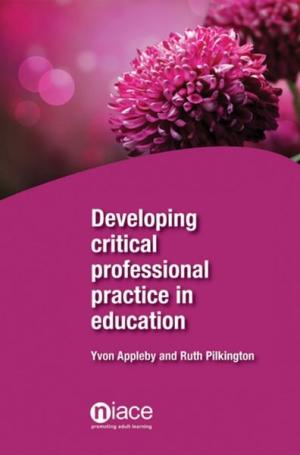
The authors of this volume are intent on promoting the advancement of critical professional development in higher education. They seek to accomplish this by highlighting existing practices and proposing a new model of professional development that is “critical, pragmatic, informed, and flexible” (2). The merits of this new model are said to be its nuance and its attention to the complex and constantly changing landscape of education, particularly higher education. The volume is divided into three parts. Part One focuses on what it means to be a professional, how this term is shaped, and how the discussion surfaces in education. The authors introduce critical professional development as the places where individual growth is shown as a collaboration of individual activity, policy, and institutional and organizational reforms. In support of this model, they advocate the establishment of institutional learning spaces and support structures to achieve their goal. Part Two explores the model’s validity through four case studies. In this section Lynne Barnes and Christine Hough join Appleby and Pilkington in providing examples of the proposed model to enhance teaching and other professional practices. Barnes discusses a training program for deaf teachers, Pilkington explores a framework for professional development, Hough describes her experience in engendering critical thinking in higher education underclassmen, and Appleby discusses her use of writing for professional development. Part Three reflects on these case studies and how they relate to the proposed model. This section also provides recommendations for the implementation of the model and its practice in various organizations. The exploration of professionalism in Part One is dense and jargon heavy, but in this case it is a welcome exception as much of the literature on teaching and learning is filled with clichés and buzz words. The text as a whole is starkly realistic, scholarly, and pragmatic rather than idealistic. As the authors concede, the definition of critical professionalism does not contain any original components; however, it is original in its holistic and practical conceptualization of professionalism in higher education. One limit to the text’s usefulness might be its aim to address both institutional and individual practices. It seems better suited for implementation at an institutional level. Individuals without institutional influence might struggle to implement the model. The text succeeds in providing a model that is not limited by discipline. It provides such a variety of “structures and spaces” (63) that anyone could achieve some benefit from reading the book, while a full implementation of this critical professional practice may be limited. The theory proposed in this volume has wide applicability, and is worthwhile in the fields of theology and religion. Hough’s case study was particularly insightful for those teaching theology and religion. In addition, the entire buffet of professional practices recommended in this text may not be accessible to every reader, but there is certain to be something here for the entire range of practitioners in higher education.
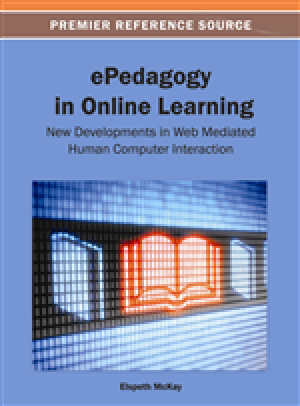
This volume consists of fourteen chapters designed “to provide a useful handbook on adopting interactive Web 2.0 tools that promote effective human-computer interaction (HCI) in ePedagogical practice for education and training” (xv). Each essay presents data for the consideration of educators and administrators who are preparing to be or who are actively involved in virtual education. Primarily, the contributors explore using Web 2.0 tools such as Blackboard/Moodle, Facebook, Twitter, YouTube, wikis, and blogs, but there is much more. The chapters are divided into four sections. The first contains essays to help the reader think clearly about methodology as it relates to the continual evolution of online education. The second section consists of essays focusing on differences between synchronous (everyone must meet at the same time either in physical or virtual space) and asynchronous learning (done on one’s own time, such as watching recorded lectures or using message boards to communicate with other students). The third section focuses on how educators might measure student development in a virtual environment. The final section is the most technical with essays dedicated to the use of software and online systems. This book does not offer quick-and-easy steps for one to follow toward successful ePedagogy. It is dense, heavily technical at points, and it requires readers to set aside time to read attentively. An educator of theological studies will have to creatively search for ways to transfer information to their own setting since none of the essays are directly related to this field. The essays are social-scientific in nature. The testing conditions and criteria are unique to each particular essay, taking place in geopolitical regions as distinct as Australia, Canada, Indonesia, Taiwan, the United States, and Vietnam. The diversity is promising, offering encounters with a wide-array of scenarios wherein Web 2.0 tools function. On the other hand, the principles offered cannot be understood in a vacuum without reference to context. This book may be best used as an occasional reference. In other words, it is not the type of practical book one would read through in a few sessions. The most useful part of each chapter for the casual reader may be the list of works referenced at the end of each study. These short bibliographies invite further exploration. In summary, readers will find insightful academic essays that will assist them in their professional development as educators in a virtual context. The essays are based on data acquired through rigorous research. The uniqueness of each case study requires the reader to actively sift universals from particulars in order to determine what information may assist them in their own work, and the technical nature of the book will require non-experts to familiarize themselves with much of the vocabulary.
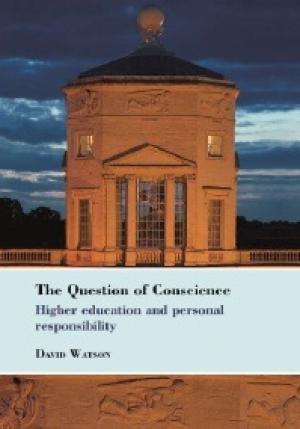
David Watson wades deeply into the various discourses on the state of higher education institutions (HEIs) in the UK (he also examines HEIs in the US and elsewhere), their problems and their prospects, to examine what HEIs say that they do for and to their most important members, award-seeking students. This self-critical look at what he calls “my trade” is for Watson a matter of the “question of conscience” or higher education’s role in shaping students’ moral and civic character. This relatively short book consists of eight dense chapters on Watson’s evaluation of the strengths and weaknesses of the best research literature on what higher education seeks to do through at least five lenses: the “evolutionary” stages of modern university history; the sense participants and observers try to make of them in terms of institutional narratives; the types of “capital” generated by their activities; the chosen pedagogical approaches; and a declared set of “purposes” or intended personal transformations. Titled, “What Does Higher Education Do? A Historical and Philosophical Overview,” the first chapter uses geography as a metaphor to demonstrate that the claims made by the modern universities (post-thirteenth-century) for their existence are previously laid geographical layers, some closer to the surface than others (1). Watson explores one of the earliest layers of university purposes: “that of maintaining, enhancing, and subjecting to supportive criticism the goal of ethical – especially doctrinal instruction” in Chapter 2 where the book gets its title (22). This chapter is arguably the one most relevant for teaching theology and religion. He traces how the university went from being a place for teaching doctrinal allegiances to being a secular place for personal and collective virtue. With the exception of some seminaries, HEIs today have largely eschewed doctrinal allegiances for a more inclusive ethos that embraces those from many faiths or no faiths at all. This does not mean that universities have become completely secular; to the contrary, the former university Chaplain has now become the Student Life Officer (26-27). Watson argues that “wariness about moral education” was replaced with a concern that there had been a decline in ethical behavior in business, professional, and political life (32). Therefore, HEIs evolved to teaching for “character.” The remaining chapters explore the other claims made by HEIs for what they do, including preparing students for vocation (43), rounded or “soft” citizenship (58), capability, and lifelong learning (65). The final chapter, “Higher Education and Personal Responsibility,” is Watson’s theory for what higher education should do: prepare students to exercise personal judgment in difficult circumstances, or “cultivate humanity” (100, 108). If taking this book to heart, it would bode well for those faculty members in theological and religious studies in the liberal arts to look critically at what our institutions exist to do and how we participate in that mission.
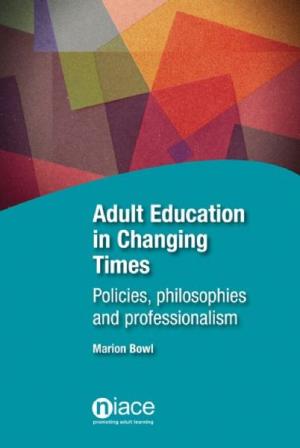
Marion Bowl’s Adult Education in Changing Times: Policies, Philosophies, and Professionalism explores the impact of changes in global policy on the field of adult continuing education. She teaches as a Senior Lecturer in the School of Education at the University of Birmingham in the UK. This title is Bowl’s most recent in a long line of publications on adult and continuing education. Bowl states “this book explores how adult educators – their work, their expectations, and the expectations laid upon them – are being affected by the changing political and economic environment” (5). She asks “why, when lifelong learning has been a policy priority for the past 40 years, does publicly funded adult education appear to be fighting for its life? And why do so many qualified, skilled, and experienced adult educators find themselves in an educational landscape that does not recognize or value their contribution?” (1). She begins by tracing the development of neoliberalism and its impact upon adult education specifically in England and New Zealand, examining the scope and definition of adult education and exploring adult educators’ beliefs and values. She then divides the rest of the volume into two sections: “Historical and Political Contexts for Adult Education” and “Adult Educators’ Working Lives Researched.” The first section presents a brief historical overview of adult education, including the impact of the Protestant Reformation, the Enlightenment, colonial expansion, urbanization and industrialization, post-World War II institutions, and globalization. The author pays particular attention to institutions, including UNESCO, OECD, the World Bank, and the European Union. She ends her historical survey by examining the role of professionalism and professionalization in the development of adult education. In the second section, Bowl explores policy and practice using her interviews with sixty-two educators in the field of adult education, evenly split between England and New Zealand. Interviewees were invited to discuss their career histories, their values and philosophies, how the field has changed over their careers, and perceived challenges and opportunities (76). She brings their narratives together to fashion a picture of adult educators’ working lives. Her findings on these educators’ attitudes toward theory, particularly the approaches of Paulo Freire and Carl Rogers, provide some interesting conclusions. In addition, her discussion of the factors impacting career identity are very insightful. Bowl ends her book by offering lessons for changing times (153). This is arguably the strongest chapter of her book and deserves to be expanded. She argues that the shifts in adult education – the growing emphasis on economic ends, marketization, the view that adult education is an individual responsibility, and tighter monitoring of educator standards – have deeply impacted the field. She advocates for a stronger linking of political engagement with pedagogical approaches; argues against hegemony in education, including preordained outcomes; supports more scrutiny of the use of power; and argues in favor of a stronger exercise of agency by educators. Finally, she notes that educators must be more willing to engage theory and politics for a “re-birth of radical education” (166). This book is well written and contains an excellent bibliography which provides a road map to these areas of the professional literature. The historical overview, however, is very limited. For example, the Protestant Reformation receives only one paragraph, and the book’s scope covers only England and New Zealand. Despite these limitations, Bowl’s scholarship provides a great starting point for explorations into these subjects in other contexts. Even though Bowl does not address theological education, adult education remains an important topic for theological education. Theological continuing education needs more discussion about its theoretical foundations and approaches, and Bowl provides a good starting point. Adult Education in Changing Times would make a good addition to progressive theological libraries with strong educational programming and terminal degrees with tracks in religious education.
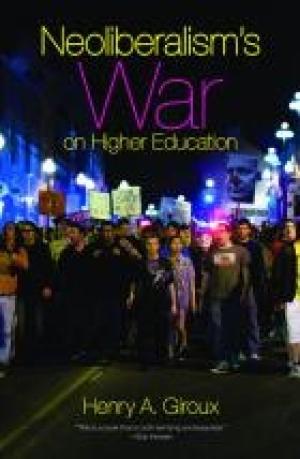
Henry Giroux’s well-researched Neoliberalism’s War on Higher Education is an unapologetic reminder of what is at stake for institutions of higher education and the academy: “Privatization, commodification, militarization, and deregulation are the new guiding categories through which schools, teachers, pedagogy, and students are defined” (36). Giroux reminds us that education is not politically neutral and that neoliberal ideas are driving how and what professors are allowed to teach. According to Giroux, “This pedagogy of market-driven illiteracy has eviscerated the notion of freedom, turning it largely into the desire to consume and invest exclusively in relationships that serve only one’s individual interests. Losing one’s individuality is now tantamount to losing one’s ability to consume. . . Shallow consumerism coupled with an indifference to the needs and suffering of others has produced a politics of disengagement and a culture of moral irresponsibility”(6). Giroux’s concern is that institutions of higher education have moved away from being places of intellectual and civic development and instead have become market-driven businesses. Students and professors are no longer allowed to engage in the art of democracy and ideas, rather students have come to be seen as consumers and professors as cheap labor. According to Giroux, “What is particularly troubling in US society is the absence of the vital formative cultures necessary to construct questioning persons who are capable of seeing through the consumer come-ons, who can dissent and act collectively in an increasingly imperiled democracy” (70). This book should be read by anyone dedicated to higher education, but it is especially useful for those teaching in the humanities. Many faculty in the humanities have been forced to sell themselves and their programs in business language to deans and presidents who are under constant stress to find funding, some going as far as finding corporate or wealthy sponsors to fund departments. In such an environment, disciplines such as philosophy, religious studies, and theological studies can be seen as irrelevant and unnecessary. Giroux’s response is to develop critical pedagogies and to encourage faculty to reclaim their roles as public intellectuals. “[A]cademics have an ethical and pedagogical responsibility not only to unsettle and oppose all orthodoxies, to make problematic the commonsense assumptions that often shape students’ lives and their understanding of the world, but also to energize them to come to terms with their own power as individual and social agents” (99). Faculty must model this behavior in their teaching and intellectual endeavors and become “border-crossers”(101). For those teaching in religion, theology, and philosophy, Giroux’s book is important because contemporary higher education classes are where students ask critical questions. Many of their questions are moral and ethical and have political implications. Contemporary humanities classrooms may be one of the only places on campus where students are not told what to memorize or the regulations needed to become better pre-professionals. Giroux forces teachers to think about how they teach and why they teach. For him, teachers have the responsibility to ask students to think and act differently for shaping the world. Giroux’s hope is that teachers will raise up a generation of democratically-minded and justice-oriented citizens. Henry Giroux’s Neoliberalism’s War on Higher Education is a welcome resource for faculty facing retrenchment, a loss of democratic value-based curricula, or who want to better understand how policies, politics, and the economy are connected to the future of higher education. The author provides examples of how faculty and students have responded to neoliberalism and a corporate model of higher education.